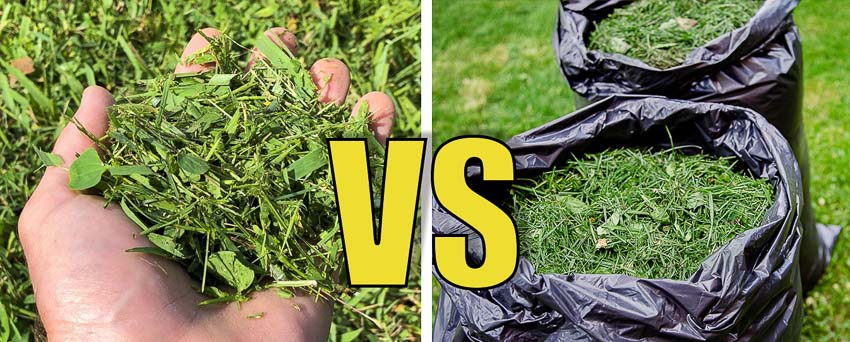Are you caught in the debate of whether to mulch or bag your grass clippings? There are advantages to both methods, so what you decide is often a matter of personal preference. Learn more about mulching grass vs bagging your clippings to help you decide.
Understanding Mulching Grass and Bagging Grass
Should you mulch your grass clippings or bag them? There are experts and professional landscapers that swear by each method. Yet, the truth is that there are advantages to each way of handling grass clippings.
What is Mulching Grass?
The tops of the blades of grass in your lawn are about 90% water. They are full of nitrogen and other nutrients. When you leave them on the lawn, they quickly decompose and return valuable nutrients to the soil.
You can use any type of mower for mulching grass clippings. However, when you cut with a mulching lawn mower, it shreds the grass into tiny pieces and distributes them back onto the lawn.
What is Bagging Grass?
Bagging grass is a popular method that many people prefer. Instead of leaving the grass clippings on the lawn, you can collect them in a bag or rake them up after cutting.
Bagging vs mulching your grass clippings results in a neater lawn, which can enhance your yard’s curb appeal, but you miss out on the benefits of mulching your grass.
Comparing Mulching and Bagging: Which is Better?
There are pros and cons of mulching vs bagging your lawn clippings, and deciding which is best for your yard is often a matter of personal preference. However, there are many factors that you should consider because the method you choose will impact the health of your lawn.
Benefits of Mulching vs Bagging
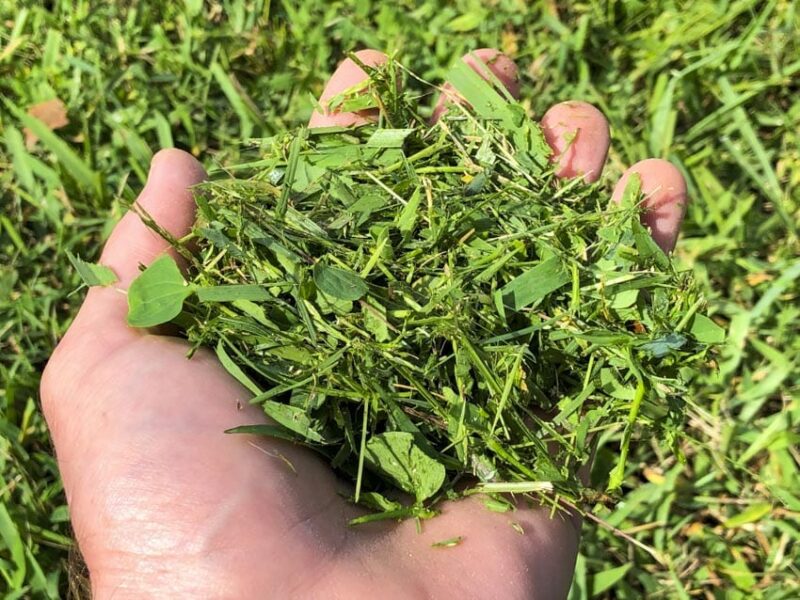
As long as you have a good mulching lawn mower, you can enjoy the advantages of mulching your grass clippings. Learn more about the benefits of mulching your lawn.
Easier Method
When you mulch your grass, all you have to do is cut it, and you’re done. When bagging your clippings, you must empty and clean the bag, then deal with the clippings. If you’re raking the grass clippings and removing them, it’s even more work.
Mulching your grass clippings is the easiest method, and you can get back to enjoying the rest of your day.
Eco-friendly
Many homeowners dispose of their grass clippings through municipal waste programs, which could end up in the local landfill. Organic waste decomposing in landfills is the third-largest contributor of methane gas, so leaving the grass clippings on your lawn makes more sense.
Manufacturers often make synthetic fertilizers out of by-products from the petroleum industry. Even worse, it’s common for people to overfertilize and overwater their lawns, which results in these chemicals leaching into nearby water sources.
Fertilizes Your Lawn
The fewer synthetic fertilizers you use on your lawn, the better it is for the environment. In weighing mulching vs bagging, it’s important to note that your lawn will need less fertilizer if you mulch your grass.
The nitrogen in the mulched grass quickly becomes available to your lawn, so it’s almost like fertilizing every time you mow.
Reduces Soil Erosion
Mulching your grass clippings reduces the effects of soil erosion in a couple of ways. First, the mulch grass clippings retain moisture, making your lawn better able to absorb heavy rains.
Second, mulching reduces the effects of compacted soil, which is one of the most significant contributors to erosion in most homeowner’s yards.
Keeps Your Lawn Moist
People sometimes think that mulching your lawn clippings contributes to excess thatch buildup, but since the grass clippings are mostly water and nitrogen, they decompose quickly and absorb back into the soil.
Being 90% water, the grass clippings help keep your lawn moist. This is better for the microorganisms in your soil, as they help break down thatch.
Costs Less
What’s more, some extra costs come with bagging your clippings. For example, you have the expense of a mower with a bagging attachment, replacement bags, and a leaf vacuum.
Disposing of the grass clippings may also generate additional costs. If you’re paying someone to care for your lawn, it will take them longer, so you’ll pay more for labor.
Benefits of Bagging vs Mulching
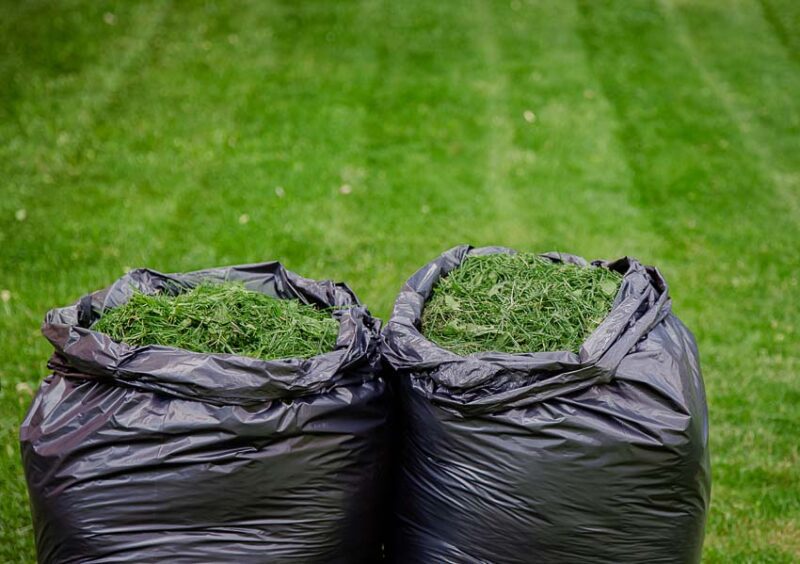
If you choose to bag your clippings instead of mulching them, there are advantages to that method, too. Discover the benefits of bagging your grass clippings.
Composting Material
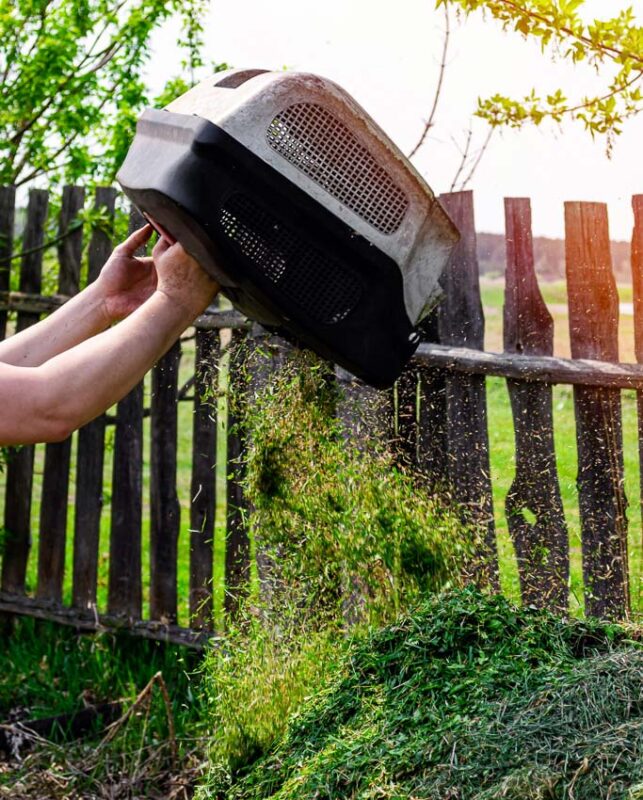
Grass mulch is great for composting, and you can bag your clippings and use them to enrich your pile.
Beyond adding bulk to your compost, grass clippings are high in nitrogen, speeding up decomposition. They also provide moisture to your compost, making it easier to keep hydrated.
Not as Messy
Some homeowners don’t like the mess that mulching lawn mowers leave behind. It’s even worse if you let your grass grow too long because it’s more likely to leave clumps of grass on the lawn.
When you bag your grass clippings, you don’t have to worry as much about how long your grass is when you cut it because you’re already handling the mess by bagging or raking.
Better Curb Appeal
Bagging your grass clippings enhances your yard’s appearance, giving your home better curb appeal. If you appreciate a tidy, well-kept lawn, bagging your clippings is preferable to mulching them.
Fewer Pests and Diseases
Yard debris attracts pests and diseases; even small amounts of yard waste can harbor insects and grass fungi. If you have lawn diseases in one part of your yard, you can easily spread them to other parts by mulching your grass.
Fewer Weeds
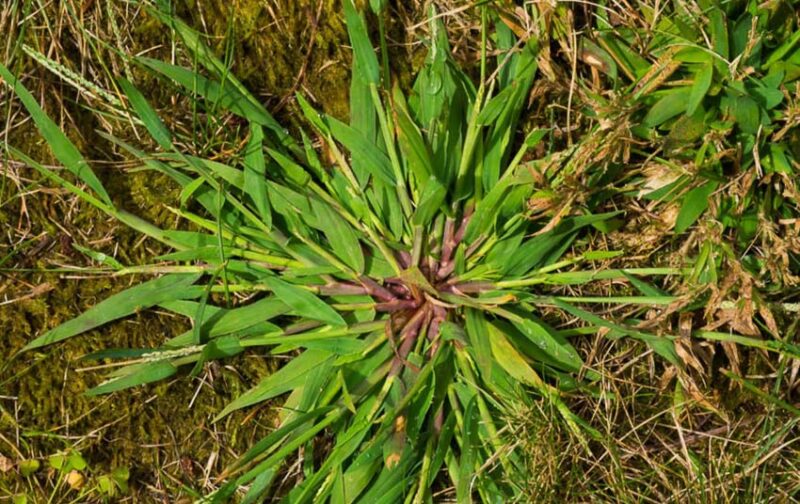
If you have a problem with weeds like dandelions, clover, plantain, and crabgrass, bagging your clippings will help prevent the spread of seeds. When you mulch grass clippings full of weed seeds, you provide the perfect environment for weeds to sprout.
Fewer Allergens
Many people love the smell of freshly mowed grass. But if you suffer from allergies, you know that mowing the lawn is a common allergy trigger. Bagging your grass can cut down on pollen and allergens, which should help you enjoy your outdoor spaces more.
Mulching vs Bagging: Factors to Consider
Still, trying to decide which method is best for you? Here are some main factors to consider in the mulching vs bagging debate.
Extra Steps
Mulching your grass clippings is easy, but several extra steps are involved when bagging them. You must empty the bag attachment, clean the bagging equipment, and dispose of the grass clippings.
It might not seem like much, but experts estimate that bagging grass vs mulching clippings adds about 40% to the time it takes to mow your lawn. That’s why professional landscapers usually charge a fee to bag your grass clippings.
Curb Appeal
One of the most significant factors to consider is curb appeal. There’s no denying that a lawn looks better when you bag and dispose of the grass clippings. And for many, the effort is worth it.
Wet Lawns
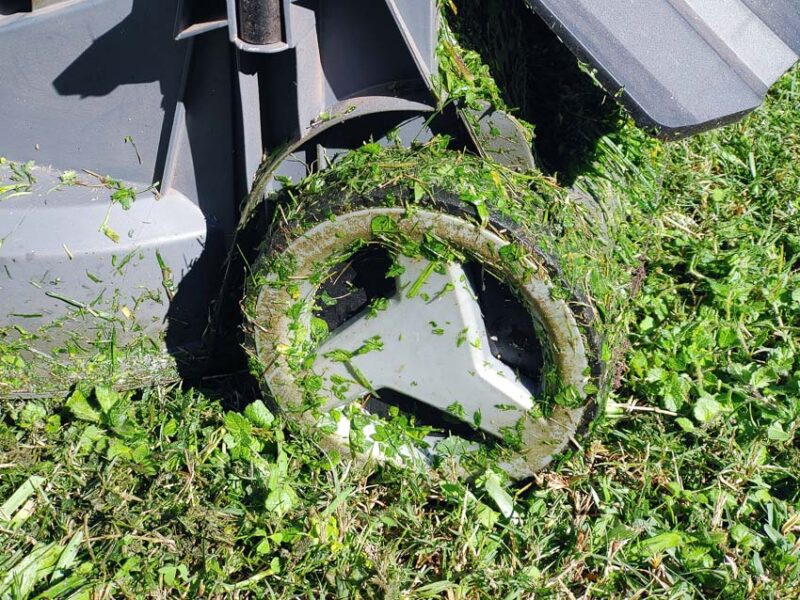
Contrary to popular opinion, you can mow a wet lawn. During certain times of the year in some parts of the country, it’s impossible to avoid.
If you live in a wet region, you will need help with both methods. If you bag your clippings, your equipment gets messy and can be extremely difficult to clean. Mowing a wet lawn can also clog the bagging attachment.
However, mulching your grass clippings on a wet lawn isn’t great, either. That’s because it will leave behind sticky clumps that can cause problems if you don’t remove them.
How to Decide Between Mulching vs Bagging
Since both methods have pros and cons, deciding whether to mulch or bag your grass clippings comes down to personal factors like the health of your lawn and how you use it. It helps to identify your goals and preferences.
Lawn Health Assessment
A thorough lawn health assessment can help you decide whether to bag or mulch your grass clippings. To conduct one, start by testing your soil. A soil test will help you make informed choices about what kinds of soil amendments to improve your lawn’s health.
Next, test the thatch using a shovel to cut a cross-section of your lawn. If you have more than a half inch of thatch buildup, you should plan to dethatch your lawn.
Use a screwdriver to probe the soil. If you have trouble pushing it in, then you’ve got compacted soil, which means you’ll need to aerate your lawn.
Walk around your yard with a notebook, and identify problem areas. Try to be as objective as possible and focus only on problem identification.
Considering Lawn Usage
How do you use your lawn? Mulching is usually better if you use your lawn for recreation because it results in a healthier, more resilient lawn. If your lawn is for aesthetic purposes, bagging your grass clippings will be the better choice.
Identifying Your Goals
Lush green lawns don’t just happen by accident. They require a lot of care, planning, and maintenance. People with beautiful lawns take the time to identify their long-term goals and develop watering, weed control, mowing, and fertilizer schedules.
How to Implement Mulching or Bagging
Whether you mulch or bag your grass clippings, follow these tips and techniques for the best results.
Mulching Grass
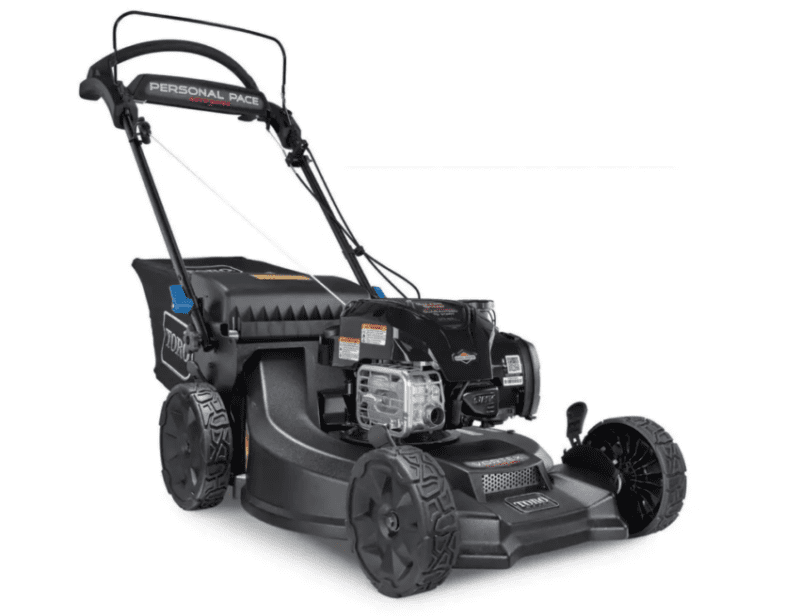
When mulching your grass clippings, you can use any type of lawn mower, but a mulching lawn mower does a much better job. It’s also important to mow regularly, so you don’t have to deal with long grass clippings.
You should keep your mower blades sharp because clean cuts reduce the risk of spreading diseases. Also, avoid mowing wet grass.
Bagging Grass
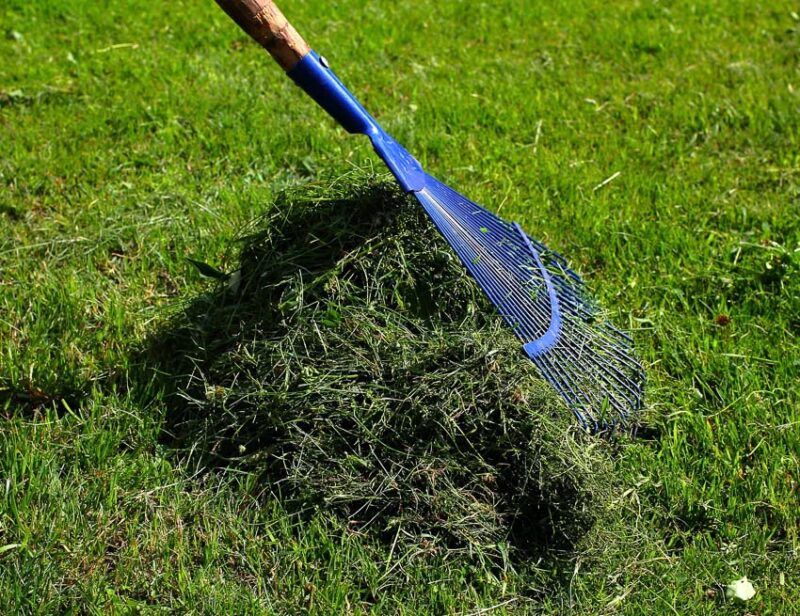
There are two methods for bagging grass clippings. You can use a regular mower and rake your clippings and bag them, or you can use a lawn mower with a bagging attachment. Obviously, the second choice is a lot less work.
Either way, you must find a method of disposal that works for you. Composting is a free and eco-friendly method for disposing of yard waste. You can also contact yard trimming drop-off sites and removal services in your area.
FAQ: Common Questions About Mulching vs Bagging Grass
1. Will mulching contribute to thatch buildup?
Many people think mulching contributes to thatch buildup, but that’s not true. Grass clippings consist of 90% water, and they disintegrate quickly. Excess thatch occurs because there aren’t enough healthy soil microbes in your lawn to break down the organic matter just above the root zone.
2. Can I mulch grass if my lawn is full of weeds?
If your lawn is full of weeds that are going to seed, like crabgrass and dandelions, mulching isn’t a great idea. The mulched grass clippings will increase the germination rate of the weed seeds. It’s better to bag your clippings in the spring and apply an organic pre-emergent like corn gluten.
3. Does mulching attract pests?
Healthy lawns are teeming with life, so a few pests aren’t a big deal. However, mulching your grass clippings can keep your lawn moist and cool and protect it from the sun, creating the perfect environment for certain types of diseases and pests.
If you notice signs of insect infestations or grass fungus, you should bag your clippings until it’s under control.
4. Will bagging clippings remove all the nutrients from my lawn?
Even though grass clippings contain many valuable nutrients for lawns, bagging them and removing them doesn’t deprive your lawn of nourishment. Most people put their lawns on a regular fertilizer schedule, and you can reduce your fertilizer needs by mulching the grass clippings.
5. Can I switch between mulching and bagging throughout the year?
Not only is it possible to switch between mulching and bagging throughout the year, experts actually recommend it! Even if you’re firmly in the bag-your-clippings camp, there are times when you should take the bagging equipment off your mower. This includes when mowing wet lawns in the spring and mulching the leaves on your lawn in the fall.

